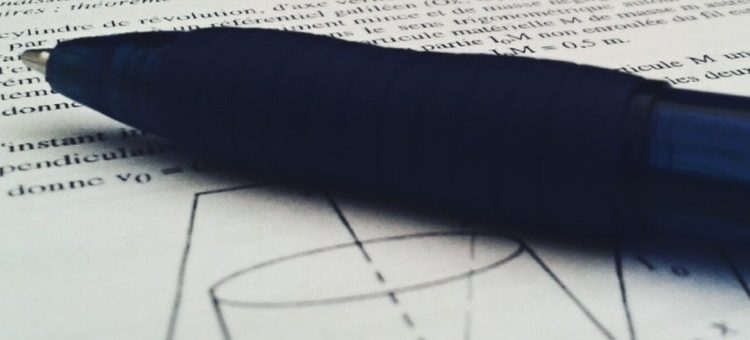How to Create Publication-ready Manuscripts Using AIP Style Guide

What is AIP Style Guide?
The AIP style guide refers to a specific citation format established by the AIP Style refers to the citation format established by the American Institute of Physics. It is commonly used in the field of physics and other applied fields of mathematics. AIP is a numbered style where references are numbered in the order of appearance in the article and listed in that order at the end of the article.
General Formatting Guidelines of AIP Style Guide
Here are the general guidelines to follow while drafting a manuscript in AIP style
- A manuscript that includes the abstract, references, and captions must be set on a 21.6 cm x 28 cm grip with ample margins.
- The manuscript must be written in scientific American English. All pages must be numbered consecutively beginning with the title and abstract page.
- The manuscript should be arranged within the manuscript body in the following order: title, author(s), affiliation(s), abstract, text, acknowledgments, appendixes, and references. Figures, with figure captions. In addition, it is recommended to submit separate figure source files.
- Series publications should be submitted in sequential order (Part I or I, Part II or II, etc.) and properly identified in the references.
- The abstract of manuscripts submitted for AIP journals should serve as an index (including all subjects, major and minor, about which new information is given) and as a summary (presenting the conclusions and all results of general interest in the article). It should be one paragraph with approximately 250 words. Furthermore, it must not include mathematical equations, footnotes, references, graphics, or tabular material.
- It is mandatory to present authors’ names consistently across all publications to facilitate indexing and avoid confusion.
- Equations must be punctuated. They must be numbered on the right.
- Mathematical operation signs indicating continuity of the expression should be placed at the left of the second and succeeding lines. Use “x” rather than a center dot, except for scalar products of vectors. The solidus (/) should be used instead of built-up fractions in running text and in display wherever clarity would not be jeopardized. Use “exp” for complicated exponents.
How to Cite Sources in AIP Style Guide?
AIP style guide is different from other style guides in its referencing style. It is a numbered style with references numbered in the order of appearance in the manuscript at the end of the article.
AIP Style consists of two types of citations: a brief “In-text Citation” throughout the text of the paper and a detailed “Reference List” at the end of the paper.
In-text Citation
- References must be cited in numerical order
- Numerals must be placed after punctuation
- Authors must be referred in text by their last name only
- A maximum of three authors must be named when citing multiple authors’ work. In case of four or more authors, the first author’s name and the expression “et al.” must be used
- Remember to place citation numbers where they will not be confused for a different meaning.
For example:
A recent measurement2 of rv
not
A recent measurement of rv 2
Reference List
- References in the Reference list must be listed in sequence of their appearance in the paper
- The Reference list must start on a new page
- It should be a double-spaced numerical list
- All references in the list must appear in the text of the paper
- Authors’ names must be notated as they appear in their original work
- Do not use “et al” in the Reference list. All authors must be listed with due credit in the Reference list.
Citing Different Sources in AIP Style
Journal Citing Format in AIP Style
Print Journal Citing Format
Initials, Author(s), Abbreviated title of journal, volume (in bold), issue or part of (in brackets if needed), First page number of the article year of publication (in brackets).
Digital Journal Citing Format
A.A. Surname, Abbreviated title of journal. volume no, issue or part of (in brackets if needed), First page number of the article (year of publication)
or
A.A. Surname, Abbreviated title of journal. volume no, issue or part of (in brackets if needed), article number (year of publication)
Digital Journal Articles with DOI Citing Format
A.A. Surname, Abbreviated title of journal. volume no, issue or part of (in brackets if needed), article number (year of publication), DOI
or
A.A. Surname, Abbreviated title of journal. volume no, issue or part of (in brackets if needed), article number (year of publication), <url>
Academic Books Citing Format in AIP Style
Single Author Books Citing Format
A.A. Surname, Title of Book, Edition (Publisher, Place of Publication, Year of Publication)
or
A.A. Surname, Title of Book, Edition (Publisher, Place of Publication, Year of Publication), pp
Multiple Authors Books Citing Format
A.A. Surname and B.B. Surname, Title of Book, Edition, (Publisher, Place of Publication, Year of Publication)
or
A.A. Surname, B.B. Surname and C.C. Surname, Title of Book, Edition, (Publisher, Place of Publication, Year of Publication)
Book Chapters Citing Format
A.A. Surname and B.B. Surname, in: Title of Book, Edition (Publisher, Place of Publication, Year of Publication), pp
Edited Book Citing Format
A.A. Surname and B.B. Surname, editors, Title of Book, Edition (Publisher, Place of Publication, Year of Publication)
Multiple Volume Book Citing Format
A.A. Surname and B.B. Surname, editors (if required), Title of Book, (Publisher, Place of Publication, Year of Publication) Volume No, pp.
Digital Book Citing Format
A.A. Surname and B.B. Surname, edition, Title of Book, Edition (Publisher, Place of Publication, Year of Publication) Retrieved from
or
A.A. Surname and B.B. Surname, editors, Title of Book, Edition (Publisher, Place of Publication, Year of Publication) Retrieved from
Thesis / Dissertation Citing Format in AIP Style
Print Thesis / Dissertation Citing Format
A.A. Surname, M.S. thesis, Place of Publication, year of publication
or
A.A. Surname, Ph.D. thesis, Place of Publication, year of publication
or
A.A. Surname, Ph.D. dissertation, Place of Publication, year of publication
Digital Thesis / Dissertation Citing Format
A.A. Surname, M.S. thesis, Place of Publication, year of publication, Retrieved from
or
A.A. Surname, Ph.D. thesis, Place of Publication, year of publication, (online database)
How to Cite Figures and Tables in AIP Style Guide?
- The figures appearing in your manuscript must be numbered in the order of their appearance in the text.
- Every figure must be fully captioned with its content explanation.
- Figure captions must be presented as a paragraph beginning with the figure number as Fig. 1., Fig. 2., and so on.
- Each figure must appear above its respective caption.
- Every figure sourced from another author’s work must be fully cited in the text and in the reference list.
- The figures must include explanation within the body of text with proper figure number.
So did you ever use the AIP Style Guide while drafting a manuscript? Did you find it difficult to apply AIP style guide while referencing? Let us know how this article helped you in drafting a publication-ready manuscript using AIP Style Guide. You can also visit our Q&A forum for frequently asked questions related to different aspects of research writing and publishing answered by our team that comprises subject-matter experts, eminent researchers, and publication experts.









